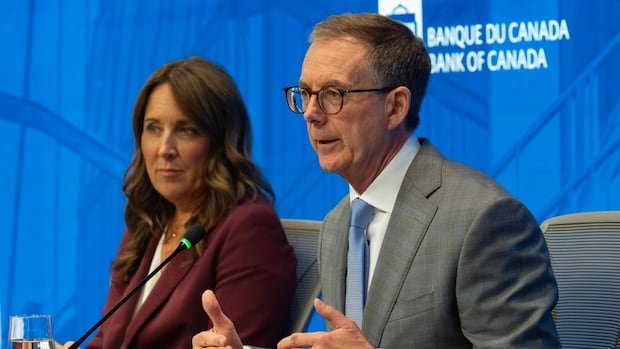
The Bank of Canada decided to maintain its interest rate at 2.75 percent, highlighting the economy’s resilience amid the ongoing global trade tensions led by the U.S. President Donald Trump. Governor Tiff Macklem expressed that the council reached a unanimous decision based on current conditions.
Despite significant trade uncertainties, Canada’s economy has not seen a sharp decline in response to U.S. tariffs, and core inflation remains relatively stable. This stance follows the bank’s previous decisions to hold rates steady in April and June due to global trade uncertainties.
Economists had anticipated the bank’s decision, as it typically lowers rates to stimulate economic growth and keeps borrowing costs high to curb inflationary pressures. Macklem noted that recent agreements between the U.S. and other nations have reduced the risk of a severe trade war, with the actual impact being less severe than initially feared.
While acknowledging the potential for rate cuts in the future, Macklem emphasized that the bank remains vigilant and ready to respond to evolving economic conditions. He highlighted that despite recent trade agreements, open trade prospects with the U.S. remain uncertain.
The Bank of Canada will closely monitor the effects of tariffs on business activities, demand for Canadian exports, and potential cost increases passed on to consumers. Additionally, the bank foresees inflation levels around 2.5 percent after adjusting for volatile factors affecting the data.
Jimmy Jean, Desjardin’s chief economist, pointed out that the decision aligns with expectations, especially with the looming tariff deadline on August 1. He suggested that the current environment favors rate cuts, indicating a potential rate reduction by September to address economic challenges proactively.
The central bank outlined three possible scenarios in its monetary policy report, reflecting varying levels of tariffs. While uncertainties persist, the bank anticipates exemptions for most Canadian goods under the Canada-U.S.-Mexico Agreement, supporting economic recovery despite the recent decline in GDP.
In different tariff scenarios, real GDP growth projections vary, with inflation hovering around two percent until 2027. The report also considers the potential impact of escalating tariffs, which could lead to higher inflation and a recession by the end of 2025.
Amidst Trump’s tariff threats, the Bank of Canada’s forecasts do not explicitly account for a potential 35 percent duty on Canadian imports if a trade deal is not reached by the upcoming deadline. The bank remains focused on adapting to evolving economic conditions to ensure stability and growth.